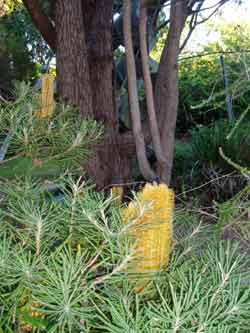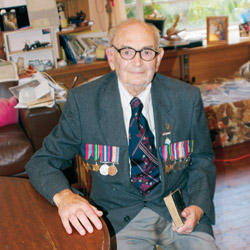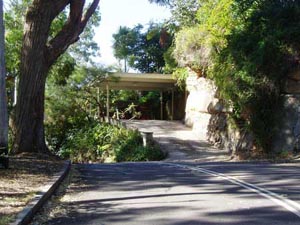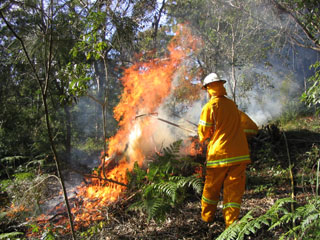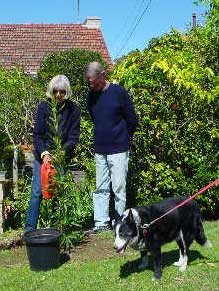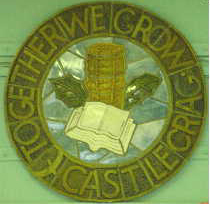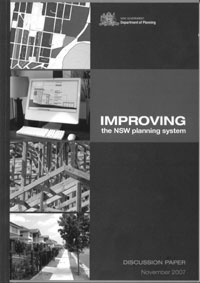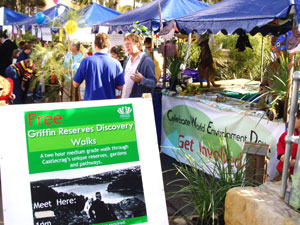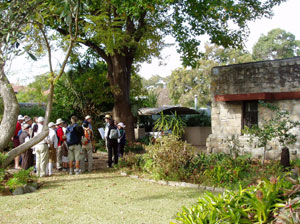Still Available! Sydney Water Rebate for Rainwater Tanks
The drought has been a time when we all have learned to use water conservatively; Australia’s variable climate means that we can expect more droughts.
Sydney Water is encouraging everyone in Sydney to install a rainwater tank. Used correctly, rainwater tanks are an effective way to take the pressure off our limited water resources, and at the same time, help manage stormwater run-off. By storing rainwater run-off from your roof, rainwater tanks can provide a valuable water source for flushing toilets, in washing machines, watering gardens and washing cars.
The following information is from Sydney Water, and there is more advice at their website http://www.sydneywater.com.au/SavingWater/RainwaterTanks/
Using rainwater appropriately (and in conjunction with water efficient devices like dual flush toilets, showerheads with at least a AAA-rating, taps, tap aerators, trigger nozzles and tap timers) can save you money on water bills and help the environment by:
• conserving our valuable drinking water and reducing the demand on our water supply (conserving water also reduces the chemical and energy requirements for treating and transporting water to your home via the mains supply)
• reducing the amount of stormwater leaving your property by minimising flooding (using your rainwater for day-to-day purposes like toilet flushing helps create space in your tank for more water the next time it rains).
While the NSW Department of Health doesn’t advise using rainwater for drinking when there’s an alternative mains water supply available, we could save millions of litres a year by using rainwater for toilets, in washing machines, and garden and outdoor use. For more information, Sydney Water has brochures “Buying Rainwater Tank” and “Installing a rainwater tank”, either via the web, or by telephoning them on 13 20 92.
There are key things to remember if you are using your tank for water conservation and stormwater management.
• Tank capacity – the larger the tank, the more rainwater can be captured for use during dry periods. A minimum tank size of 5,000 litres is desirable.
• Water use – its best to use the water in the tank on a regular (daily) basis so there is always storage capacity available in the tank when it rains. By using the tank this way you will maximise the amount of water and money you save and reduce the amount of run-off from your roof to the stormwater system.
Rainwater from your tank is fine for use with garden irrigation systems. However, if you plan to connect your rainwater tank to an irrigation system, you should ensure that you have a filter on your tank. Algae or debris can sometimes be present in rainwater tanks, and a filter will stop blockages occurring in your irrigation sprays.
Connecting your tank to your toilet cistern or your washing machine is a good way to maximise the use of your captured rainwater because unlike garden watering, you will even be using your tank water when it is raining. To supply these appliances from your tank you will need to maintain a minimum operating water level in the tank when there is insufficient rainfall. This will require a “top-up” connection from the Sydney Water supply (just like a toilet cistern) and therefore some plumbing alterations to your home. You will need to consult Sydney Water about this.
If you want to contact Sydney Water regarding any plumbing alterations, their Plumbing Policy, Standards and Regulation area can provide advice.
Sydney Water has a Rainwater Tank Rebate Program offering customers up to $650 to install a rainwater tank. A special Rainwater Tanks in Schools Rebate Program is also available for schools.
Sydney Water is offering a rebate to customers who install a rainwater tank. Rainwater tanks have many advantages – no matter where you live. Even in urban areas where a reticulated service is available, rainwater tanks help conserve valuable drinking water and reduce stormwater run-off.
What is the Rebate for? Sydney Water is offering a rebate to help customers who install a rainwater tank. To qualify for the rebate, the rainwater tank must be both:
• a new tank with a capacity of 2,000 litres or more, and
• purchased on or after 20 October 2002.
How long does the offer last? This offer ends 31 July 2008.
How much is the rebate? The rebate is based on the size of the tank and whether the rainwater is ‘plumbed’ into your toilet or washing machine.
| Tank Size |
Rebate |
| 2,000 – 3,999 litres |
– $150 tank rebate
– plus $150 if a toilet and/or washing machine is connected to the rainwater tank |
| 4,000 – 6,999 litres |
– $400 tank rebate
– plus $150 if a toilet and/or washing machine is connected to the rainwater tank |
| 7,000 + litres |
– $500 tank rebate
– plus $150 if a toilet and/or washing machine is connected to the rainwater tank |
How do you apply? Once your rainwater tank has been installed and any plumbing work completed by your licensed plumber, you are ready to apply for the rebate. You must:
• fill in your part of the Rainwater Tank Rebate Program form;
• get your plumber (if you had plumbing work done) to fill in their section;
• attach your official receipts for the tank and installation;
• send it to:
Sydney Water
Rainwater Tank Rebate Program
PO Box 17, Wollongong NSW 2520
The Terms and Conditions of Sydney Water’s Rainwater Tank Rebate Program are detailed in the Rebate Program brochure. If you have any questions please contact Sydney Water on 13 20 92
When do I get my rebate?
Sydney Water will send out a cheque for your rebate within 60 days of receiving your completed application form and receipts for the tank and installation, subject to verification of your application details.
Lorraine Cairnes
